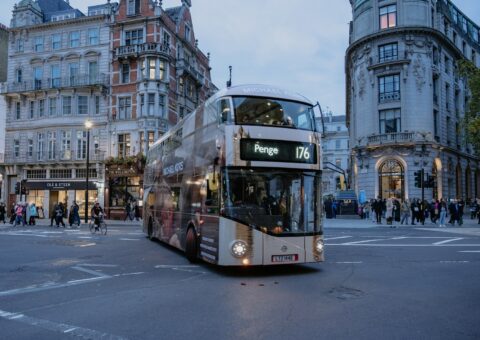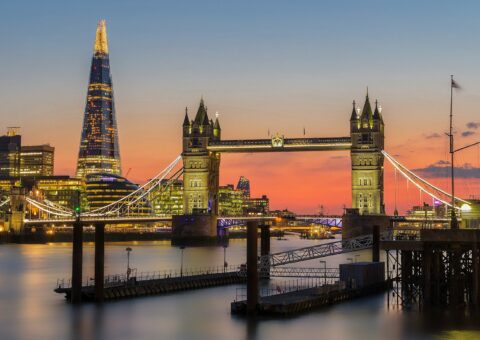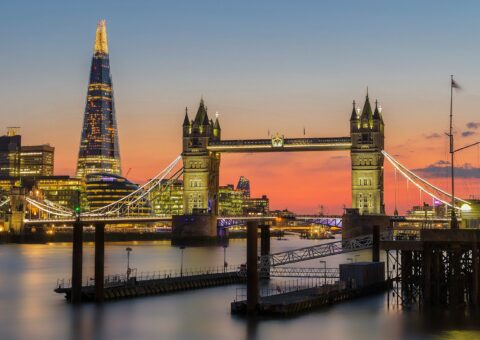Steps to finding your perfect apartment in London
London is well renowned for being one of the most international and vibrant cities in not only Europe but the world. The metropolis of the ‘big smoke’ as it is historically known, has long been a place of booming business, blooming culture, and bank-booming business.
Yet, in a city that sees hundreds of thousands of people migrate here every year, it can often be difficult to find appropriate housing, and for that matter, in the right style, and at the right price. There are numerous things to think of when it comes to finding housing, so how to find an apartment in London, and what should we look for?
Throughout this article, we will break down the biggest things to consider when it comes to how to find a flat in London. This will range from understanding the many neighborhoods in England’s largest city to the sheer range of rental properties available to you.
Generally speaking, knowing how to find accommodation in London appears to become more cryptic as the years go by. Having all the knowledge and know-how will equip you with all the tools to find the best apartment in London for your needs. Read on to find out everything you will need to know and more about how to find a flat in London.
Step 1: Research neighborhoods and find your favorite
In a huge sprawling capital such as London, you can often be spoilt for choice when it comes to where to live in the city. Each neighborhood has its own aesthetic, price range, and cultured history – all of which have a huge effect on your final decision. Let’s break down some of the most popular and best neighborhoods to live in the British capital:
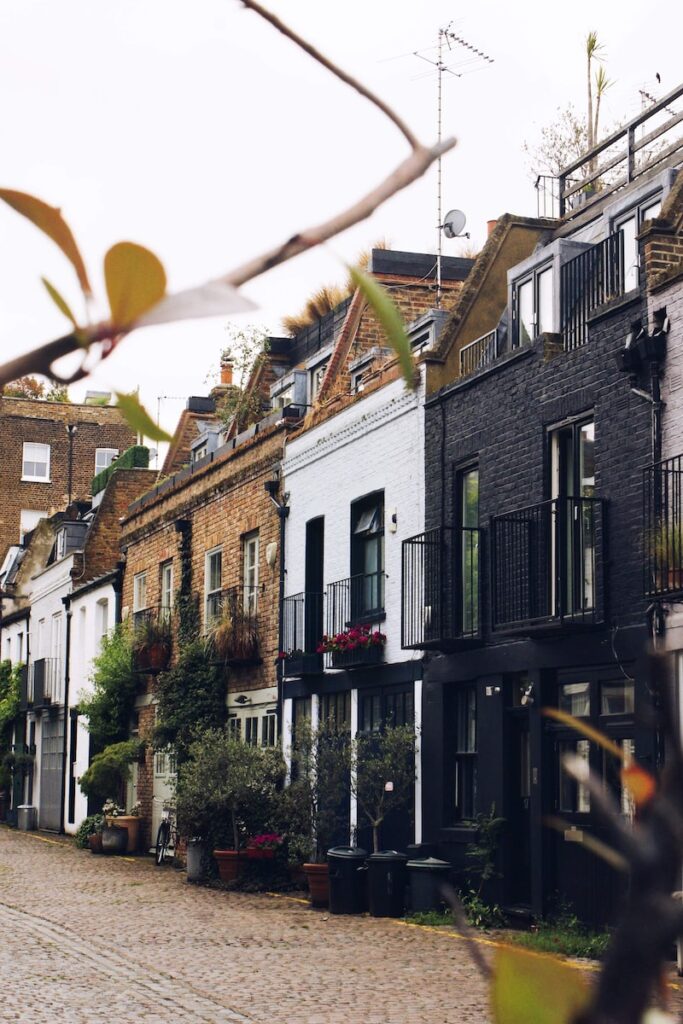
- Notting Hill
Often cited as the neighborhood that put West London on the Hollywood map, the region of Notting Hill has long been a favorite for those looking for their new home in the capital. As much as there is a calling to find well-known film sets, the neighborhood of Notting Hill also tops many lists when it comes to its iconic Victorian, typical London-esque buildings.
Once you are settled in one of these fabulous properties, you can wander through the local streets in search of Notting Hill’s renowned bookshops, artisan cafes, bars, and eateries. No comment on the West London neighborhood would be complete without a mention of the world-famous Notting Hill carnival that takes place every year on the streets of Notting Hill.
- Hampstead
Covering an area just north of the city center, the neighborhood of Hampstead is another region that has world fame. From celebrities to the well-to-do, Hampstead has contented to attract a plethora of new arrivals for decades.
What sets this region of the UK capital apart is its unassuming, almost village-like feel. Once you have escaped the hustle and bustle of inner London, Hampstead is an almost oasis of calm and greenery. Taking center stage in this green landscape is the city’s most well-known open space, Hampstead Heath. From long idyllic open spaces of almost countryside to spots for wild swimming, Hampstead Heath has it all.
Alongside Hampstead’s celebrity residents and dog-walking havens are a number of London’s best eateries, cafes, butchers, and independent stalls. This being said, Hampstead is also reportedly home to more millionaires than any other area in the UK, so you may have to stretch your budget a little more to find a flat in London’s Hampstead neighborhood.
- Battersea
South of the river on London’s west side is the neighborhood known as Battersea. Once an industrial area known for its power station and iconic Battersea Bride, the region has quickly become a favorite for new arrivals in the city. Attracting a young population, Battersea is famed for its nightlife and social scene, which has brought in a booming culture of partying and youth culture over the past few decades.
As is the case with much of London’s gentrified neighborhoods, Battersea can be a tricky place to muscle your way into the rental market, yet it has all the rewards once you do so. Battersea offers the chance to settle in the western edges of the British capital without the cliche connotations of London’s traditional ‘west end.’
- Camden
Camden and the famous Camden High Street has gone down in London folklore as a region for youth culture, artistic expression, and working-class rejuvenation. For decades, independent shops, record stalls, and street corners would be full of the promise of youth culture change. In the current times, Camden still retains this energy, yet is also home to a number of quieter residential streets that welcome families, expats, and the wider range of London society.
When the sun goes down, Camden truly comes into its own. The eclectic range of pubs, music venues, and takeaways bring the electric population of Cadem with them throughout the small hours.
- Chelsea
Chelsea is one of London’s quintessential well-to-do neighborhoods. The streets of Chelsea ooze with top-end attractions, making it a playground for the rich and famous. Home to some of the most expensive postcodes in all of London, you will need a healthy monthly budget to afford a rental here, but life here can be extremely rewarding.
As well as having some of the capital’s top foodie locations on your doorstep, you’ll also be within walking distance of London’s most prestigious schools and the mighty Kensington Gardens. What’s more, Chelsea harbors a rich demographic of people from all walks of life, from young professionals to families, retired couples to students.
If you’re interested in knowing more about London neighborhoods, read more about
Step 2: Understand the different types of rentals available
When it comes to knowing how to find an apartment in London that meets your exact needs, you’ll need first to understand what’s out there and available to you. With such a huge demand for housing in London, you’ll find almost every type of property that you can imagine, but some are much more common than others. Here is what you can expect.
- Furnished accommodation
Moving into a furnished flat in London can make the process of moving to the big city a lot less stressful, and a lot more affordable. Not having to worry about buying a bed, fridge, sofa, or wardrobes and seamlessly settling into an already furnished flat allows for a hassle-free experience. Luckily, furnished flats are very common in London, and you won’t struggle to find one up for rent in the neighborhoods of your choice.
Generally, furnished flats can be split into two groups; serviced apartments and traditional furnished flats. The latter is a common choice for students, young professionals, or those that will only be in the city for a year or less. These types of flats come with all of the basics you would expect, including a bed, sofa, fridge, washing machine, and storage space.
Serviced apartments, on the other hand, take the idea of furnished flats to a whole new level. Many are equipped with added luxuries, plus a fully equipped kitchen, cleaning services, and sometimes an onsite gym. Plus, all of your utilities will be included in your monthly rental price.
- Short-term rental
While short-term rentals in London are less common, they are out there. Similar to serviced flats, a lot of short-term rentals tend to come as a package deal. That means you agree to a time period that you will be there, and all of your bills, utilities and other amenities will be included in the price. Usually, these types of rentals are available from one to six months, but each landlord or estate agent runs different policies.
An added bonus is short term rentals are usually a lot more flexible than traditional renting. They allow for last-minute bookings and weekly or monthly extensions, and you don’t need to pack too much to get your life started in London – just the essentials!
- Aparthotel
For those looking for a completely seamless move into the Big Smoke, Aparthotels offer up the ultimate convenience and luxury. A type of serviced apartment, you’ll find all of the creature comforts that you’d expect to have in your own apartment with the added benefits of hotel service. Most aparthotels consist of a bedroom, living space, kitchen, and bathroom, all fully equipped with cooking utensils, laundry facilities, and Wi-Fi set-up, so you can simply pick up where you left off once you get to the capital.
Better catered to those on business in London or couples looking for a little bit of luxury in the capital, Aparthotels are ideal for those only staying for the short term. Generally cheaper than a hotel but more expensive than renting a traditional flat for the long-term, Aparthotels offer up that middle-ground luxury living in London.
- Coliving
Due to the rising rental costs in England’s capital city, co-living options are extremely popular. While they tend to be more common with students and young professionals, co-living is a great option while you’re finding your feet in London and aren’t quite sure where to set up your roots.
Generally, co-living takes place in a flat or house share. You’ll have your own bedroom but will share other common facilities, including a kitchen and bathroom. Very rarely, you may find a room with an ensuite too. Co-living tends to be a more casual arrangement and offers up both short and long-term options.
- Unfurnished
Amongst the many thousands of properties on the rental market in London, you’ll find a handful of unfurnished properties too. While these may not be the most convenient option for short-term tenants, they offer up a world of possibilities for those hoping to stay in London for the long haul.
Unlike some other European countries, unfurnished flats in London do come with a kitchen and sometimes other facilities like a fridge, washing machine or dishwasher. However, every flat is different, and you’ll need to read the small print to find out exactly what is included in your choice.
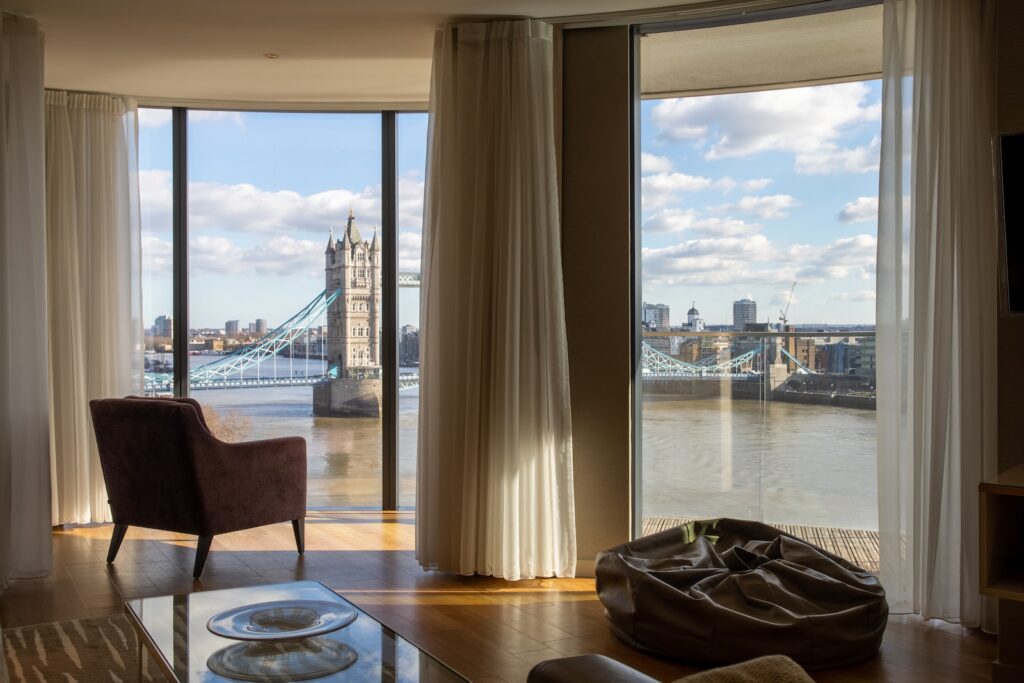
Step 3: Get your head around London property types
There’s a lot of jargon that goes along with the London property market, and part of understanding how to find accommodation in London is knowing what all of the different types of housing are called. If you’re from the UK already, you can probably skip this part; if you’re from another country, you might want to pay close attention.
- Detached. These properties stand solely by themselves and do not share a wall with any other properties. As you can imagine, space in London is scarce, and these types of housing don’t come around. Plus, when they do, they’ve normally got a rather large price tag attached to them.
- Semi-detached. Slightly different from a detached property, a semi-detached house usually shares one wall with its neighbors. You’ll find that a lot of the iconic London townhouses are of this style.
- Terraced. Taking it one step further, terraced houses share both of their walls with neighbors on either side and tend to be slightly smaller in size. These are usually older properties that are used as house shares or family housing.
- Flats. Flats come in all shapes and sizes in London, from ex-council flats in the outer suburbs to modern condos in the City. Studio flats are a common choice for those hoping to live on their own without a huge budget to spend. It’s also quite common to forgo a living room in exchange for lower rent and another housemate. Flats can also be split further into:
- Mansion flats
- Studio flats
- Purpose build flats
- Maisonettes
- New-build. New builds are popping up across the UK and can be found in London’s outer neighborhoods. These are usually built to similar specifications, with all of the modern conveniences you could imagine.
- House Share. More common amongst students and the younger demographic, house shares work by giving each tenant a room inside the property, with shared areas like kitchens and bathrooms.
Step 4: Make a list of must-have amenities and facilities
We all have a picture in our heads of what our perfect flat in London looks like, but we don’t always think about the practical things like the amenities and facilities we would like. Before you start typing your query into Google, there are a few extra things to consider.
- Commute time. How far are you willing to commute to work?
- Budget. What is the maximum you can afford, taking into account bills and utilities?
- Parks and outdoor space. Is it important to be close to one of London’s famous parks?
- Education. Do you need a school close by?
- Transport. Will parking be necessary, or are you happy taking public transport?
- In-house facilities. Are things like laundry space, a gym, or even a swimming pool essential?
- Security. Would you prefer to have a 24-hour concierge or security on the property?
- Pets. Does the apartment need to be pet-friendly for your four-legged friends
- Local area. How close is your apartment to shops, restaurants and bars?
Step 5: Use the internet to start your search
When it comes to understanding how to find a flat in London, the internet will be your best friend. Websites, including Rightmove, Zoopla, and Spareroom, have huge databases with hundreds, if not thousands, of rental properties. Each is listed with professionally-taken photos, full details of amenities and facilities along with the expected monthly rental prices.
To get your search off to a quick start, here are some of the best websites around to help you find a flat in London:
- Homelike. Ideal for furnished apartments, serviced apartments and aparthotels and caters to short stays as well as longer-term rentals.
- Rightmove operates across the UK and has become one of the household names in finding a rental properties.
- Zoopla. Similar to Rightmove, you’ll find endless listings of flats and houses to rent across London and can organize a viewing with the touch of a button.
- SpareRoom. If you’re going for the more budget-friendly option, use SpareRoom to find empty bedrooms in house shares across the capital.
- Gumtree. A more casual option, Gumtree will connect you with landlords across London. It’s important to be wary of these ads and to ensure all correct procedures are carried out if you do choose to rent this way.
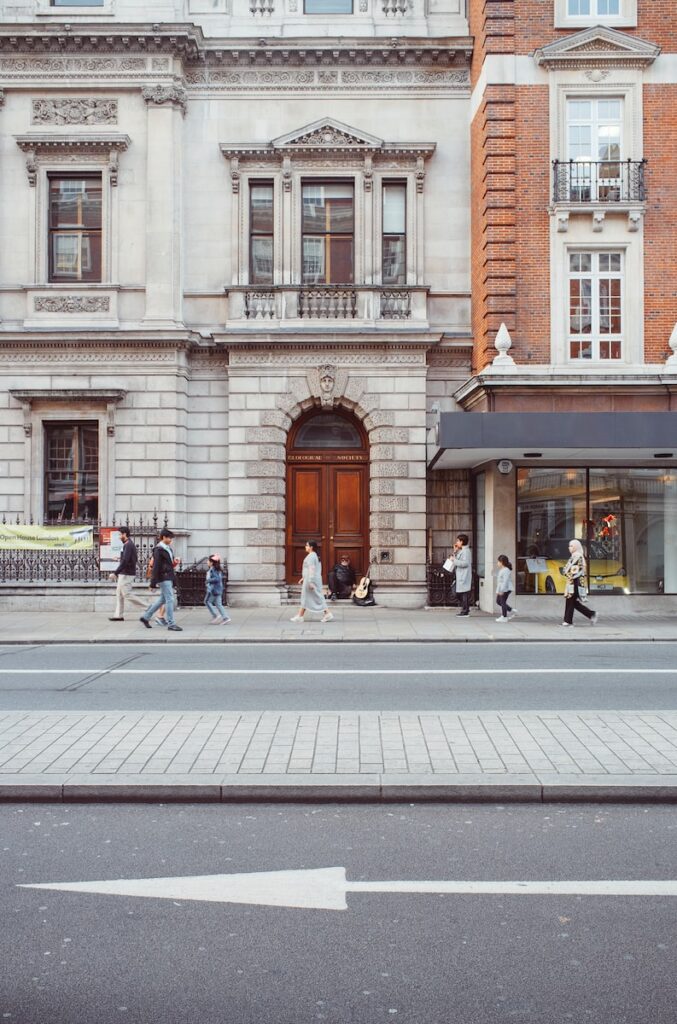
Step 6: If all else fails, use an estate agent
In this modern age, almost all properties that are available to rent will be listed online in one way or another. However, if you’re really struggling to find anything using online estate agent services and websites, you can register with local estate agents that will help you on your way.
Foxtons, Acorn, Knight Frank, Hudsons, Savills, Dexters, and Winkworth are just a handful of the many agencies peppered around the city. However, not all of them serve the same areas, so it’s worth pinning down a neighborhood before you start registering with every single agency out there.
Once you’ve given them your contact address, as well as some details about your income and previous retinal history, the estate agent will send over any properties that become available. As you can imagine, there are hundreds of people on these mailing lists, and you’ll need to promptly reply if you want to be in with the chance of securing a viewing, let alone being about to rent it.
To make this process all the easier, it’s important to be completely transparent about what you’re looking for in a property. This includes letting them know your maximum budget, how many people are looking to move into the property, and the minimum number of bedrooms you need.
Unfortunately, using a letting agent does come at a price. On average, they charge between 5-10% of the rental fee. Before you sign any contracts, make sure you understand exactly what the fees are.
Step 7: Get your paperwork ready
As we’ve already mentioned, the property market in London moves fast, and those that are prepared to pounce on any opportunity are usually the first to get the flat or apartment. When it comes to understanding how to find an apartment in London, getting your paperwork together in advance is an absolute must. In fact, some estate agents or landlords won’t let you view properties without seeing proof of income or a signed guarantor form proving that you can afford the rent.
Not all landlords will ask for the same information, but here is typically what is expected of you:
- Preferred tenancy start date
- Two referees (previously landlords or employers)
- Guarantor details (mainly for students or those who are not yet employed)
- Employment details (including a salary statement and three payslips)
- Bank statements
- Photos ID (usually your passport)
- Proof of immigration status
Having all of these documents ready before you begin your search will allow you to be prepared for any situation that may arise and allow you to seize the opportunity if your dream apartment comes onto the market.
Finding an apartment in London made easier
Moving to a new city, especially one as large as London, can be a daunting experience, to say the least. What makes it even more difficult is that the housing market in London is extremely competitive and isn’t always easy to navigate as a newbie. Saying that, when you break down how to find a flat in London into seven simple steps, the move doesn’t seem quite as overwhelming as it may have originally been. After all, it’s all about understanding your wants, needs, and boundaries, as well as what London has to offer, and putting it all together to create your perfect home away from home.
We hope that this guide on how to find accommodation in London has been helpful in your move to the Big Smoke. Good luck!
For more information on moving to London, read our London moving guide.
If you’re an expat, we have a fabulous guide for expats in London to help you navigate your first few weeks in the city.




